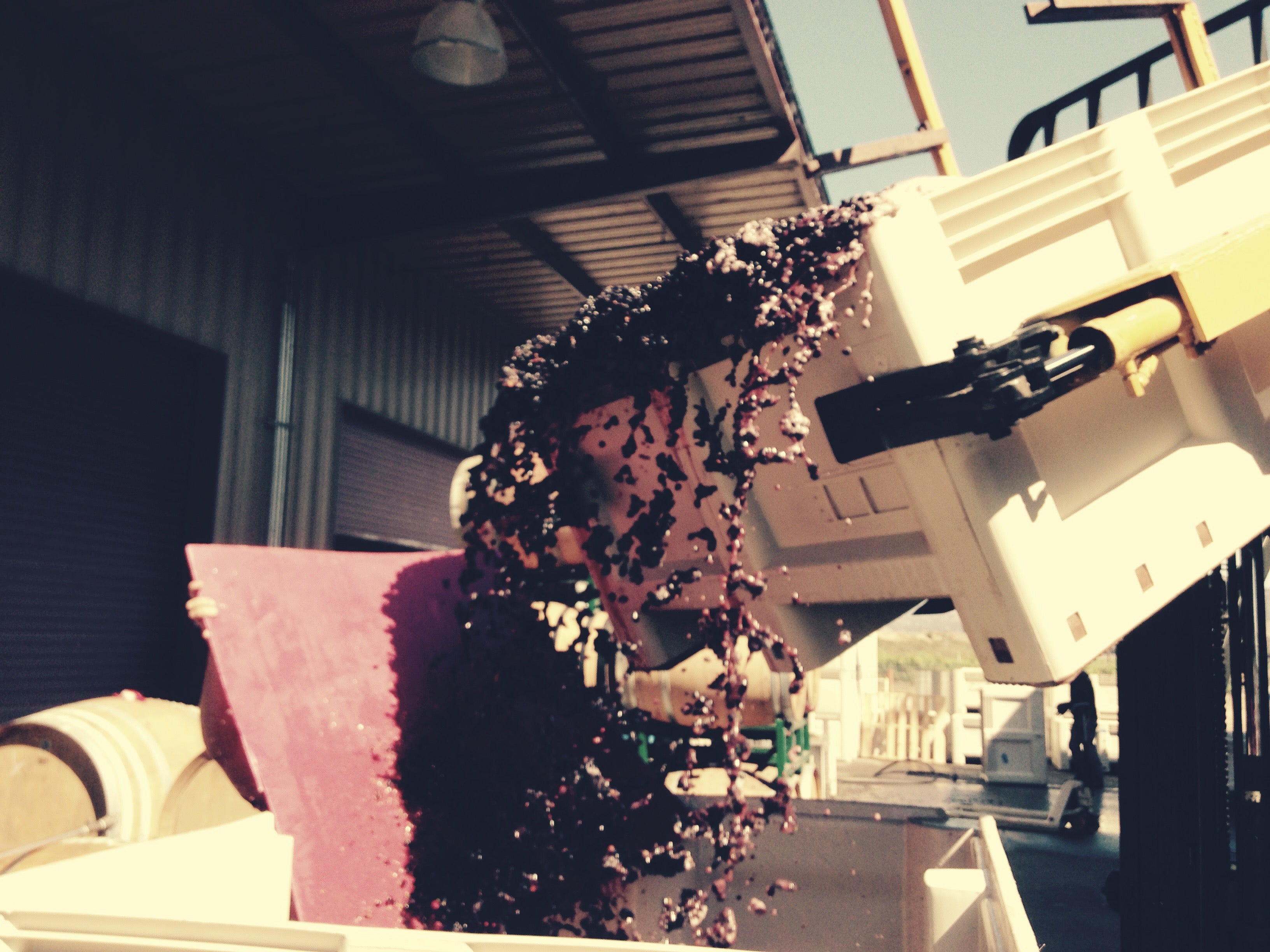Winemaker Notes from the 2015 Harvest
The Following Dispatch comes from Aether Winemaker Jeff Fink
Santa Maria, Santa Barbara County, California
Passing along some observations after harvest.
If you have not heard, the wine districts of California experienced a very early grape harvest this year. Our first Pinot Noir was brought in on August 18. In reality though, this was exactly one year to the day of our first Pinot Noir of the 2014 vintage – which was, at that time, the earliest of my 23 vintages. Are these earlier harvests an anomaly or a reset? Time will tell, particularly if we have significant El Nino-induced rainfall this winter.
California is in the fourth year of a persistent drought. Despite these conditions, three of the first four drought vintages, 2012-2014, were above average in yield, 2012 being the largest. This then begs the question – what is an average yield? For Pinot Noir, depending on vine age and density of planting, anywhere from 2-4 tons of grapes per acre. In liquid terms this translates to 300 to 600 gallons of wine/acre or 1500-3000 bottles/acre.
If a vineyard is planted at a row spacing of 7 ft. and vine spacing of 4 ft. that would mean there would be ~1500 plants per acre and that each vine on average would produce enough juice to make one bottle of wine at a yield of 2 tons per acre. In 2015, our vineyards produced only 1.5 – 2.5 tons per acre and the result of these low yields are very dark and concentrated wines.
In 2015 the fruit was picked from 23-24.5 brix depending on the vineyard, and we kept a close watch on the pH of the juice pre-harvest, as always, to retain the natural acidity. This is important. Wine is a beverage of flavor and complexity and there are a myriad of naturally occurring organic compounds in wine grapes that contribute unknowable amounts of flavor and aromas to the wine. When wine grapes get past a certain level of ripeness they start to lose not only measurable acidity, but also the many attendant compounds that exist in almost immeasurable amounts.Determining when to pick grapes from each vineyard requires a mixture of experience - both over many vintages in general and with multiple vintages from each vineyard, a strong vision of how to handle the fruit in the winery, and as in most things that involve nature, luck – the good kind always preferred.
For other indicators of ripeness besides sugar and acidity, there is the all-important quality of the skins – thin or thick, with tannin and pigmentation in greater or lesser degrees. Also seed color – brown is desired. Then there is stem maturity. This is important for those of us that utilize the whole clusters during fermentation. This requires leaving the berries on the stalks and that those stalks be ripe.
Properly ripe stems suitable for use in whole-cluster ferments would typically be lignified or woody at the tip where the stem connects to the vine. Also, the whole rachis (“rake-us”) or stalk will have lost the bright green color it had only weeks earlier. Prior to making any decision to utilize the whole clusters, a certain portion of the grapes is de-stemmed and the stalks evaluated. To be suitable, the stems should have ripe, sweet and spicy aromas and be devoid of any harsh or astringent flavors. What the use of whole–cluster fermentation brings to the wine is a topic for a future post.
To recap, the 2015 vintage for us was early with low yielding vineyard production. The young wines in barrel have intense dark color yet are supple on the palate.
A medium amount of whole cluster was included. As a side note whether we used indigenous yeast or cultured yeast, the fermenters went dry in 7-10 days once they became active. Additionally, the malolactic fermentation started spontaneously during primary fermentation for most lots of Pinot Noir. Explanation for this TBD.
There is something about each vintage that has the promise or potential for greatness. 2015 is no exception. We will do our best to keep things moving in the right direction.
Also, now that harvest is over so early, we turn our attention back to the 2014 vintage as to its current temperament. We will assess all our barrels to look at the possible combinations, as the 2014 vintage will be in the bottle within 4-6 months.

Finally a word on the 2013 wines.
This post has been written in the company of a bottle of the 2013 Aether Santa Barbara Pinot Noir. Opened on Friday, October 2nd, tonight the wine is lively and lovely after two days. When the cork was first pulled, there was a bit of a kerfuffle of aromas and flavors vying for attention but this young wine is now composed and actually quite thrilling as only Pinot can be. It is often an angst-ridden 4-6 months after bottling the new wine – wondering and hoping if the right decisions were made. If tonight is any indication, with just over 6 months time in the bottle, all systems are a go.


